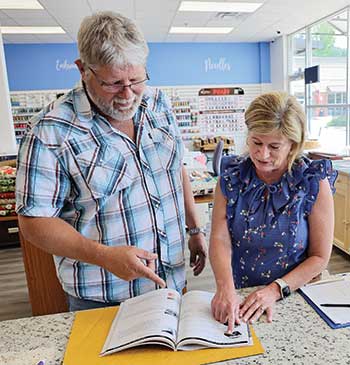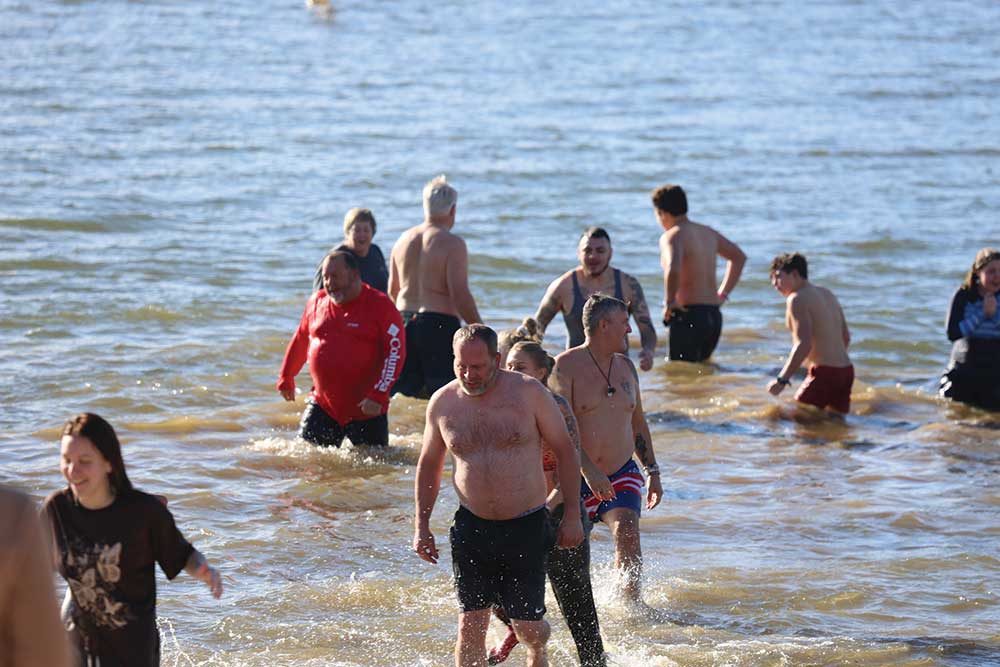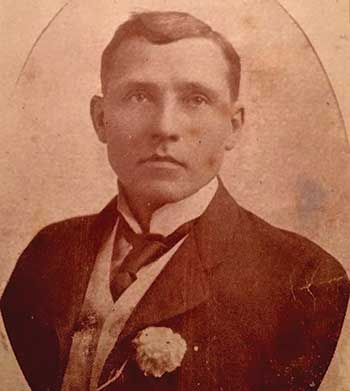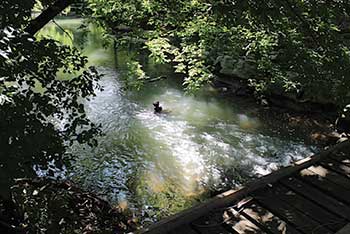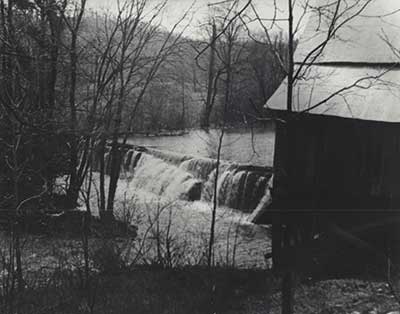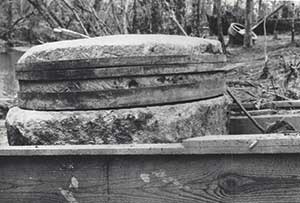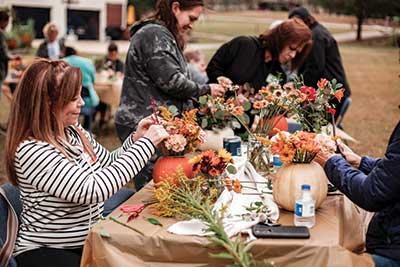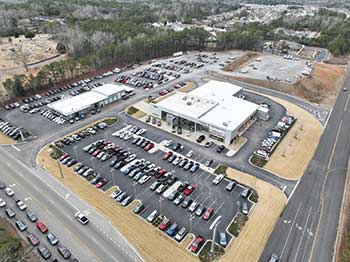Springville’s place for sewing, quilting and learning
Story by Elaine Hobson Miller
Photos by Richard Rybka
Kathy Hymer drives up from McCalla to Springville for computer classes. Sheila Lankford drives down from Attalla for quilting classes. Both say it’s worth the miles for what they learn at the Sewing Machine Mart, a relatively recent addition to the Springville Station strip shopping mall.
“I’ve taken jelly roll race-quilt classes (so-called because the quilts work up quickly), crazy-quilt classes and a three-yard quilt class there,” says Lankford. “I love the Sewing Machine Mart.”
Hymer echoes the sentiment. “They’re great. I can’t say enough about them. I’ve taken (sewing machine) computer classes and quilting classes. Every machine I own has been purchased there.”
The Sewing Machine Mart originated in Tarrant in 1950, then moved to Homewood, where it remained for almost 30 years. Shawn Jackson, who owns the store with his wife, Heidi, started there in 1994, while he was working as a Birmingham firefighter. “I went there as a technician,” Shawn says. “I knew nothing about working on sewing machines but had always been a Mr. FixIt.” When the original owners retired In 2002, he bought the store.
About five years ago, the Jacksons moved to Gallant, and drove back and forth to their store in Homewood. “I pay attention to things and kept my eyes open for a place for the shop after we moved up here,” Jackson says. Then they got word that the building they rented had been sold and was to be torn down to make way for a restaurant.
So, in January 2022, they moved their store to Springville. “My wife shopped at stores in this mall, and we ate in restaurants around here, and one day we spotted this place,” Shawn says. “It’s where the old ABC store used to be.”
Rows and rows of liquor bottles have been replaced by rows and rows of sewing machines that do everything but talk. And some may soon do that. There are more than 40 on display, including a long-arm quilting machine and a couple of multi-needle embroidery machines.
Prices for the four brands they carry — Pfaff, Husqvarna Viking, Baby Lock and Singer —- range from $180 to $24,000. At least one machine is wi-fi enabled, so you can buy a design online and download it to the machine. It also has a built-in electronic tablet on one side.
“It’s amazing what technology is doing with sewing machines these days,” Shawn says. “I can remember when the first embroidery machine came out. It could do a 4 x 4-inch piece of fabric, and now we have machines that can do a 14 x14-inch piece. One of our Pfaffs has Artificial Intelligence. I’m not sure what that will mean, but I anticipate the customer being able to add new features to it, and AI will learn them. That machine also has a camera and built-in wi-fi.”
He doesn’t wince at some of the high prices, comparing them to the cost of hobbies such as golf and fishing. Women sometimes come in and tell him, “My husband just spent $50,000 on a boat, I think I can spend $20,000 on a sewing machine.” He does, however, advise potential customers to have a budget in mind before they come in. “We’ll help you find the most for your money,” he says. “You may still wind up with more than you can use, but you will grow into it.”
Most of the store’s customers are hobbyists that Jackson describes as “memory makers,” turning shirts, pants, ties and tees into quilts, for example. “Probably 20 to 25 percent of our customers, though, have some type of sewing or embroidery business, often in their homes.”
He believes sewing is more than a hobby now. It’s an art form. “It’s not just about making clothes for your kids,” he says. “Your imagination is your only limitation. We have some Cosplay customers, people who dress up in costumes to play video games and do other role playing.They’ll sometimes buy clothes at the thrift store and go home, take them apart and re-make them into a costume for Comicon.”
The Sewing Mart had no space for fabric in Homewood but started carrying some when it moved to Springville. They also carry storage cabinets, sewing machine tables, cutting tables made by a local man and notions (scissors, thread, needles, etc.). “We service all makes and models of sewing machines, with a one or two-day turn-around on repair jobs,” Jackson says. “We sharpen scissors, too.”
Some of their classes are machine or software specific, so a customer can get the most out of a new purchase. They offer several quilting and sewing classes that usually take four to seven hours on the same day, and cost from $25-$150. Some come with kits, others require a customer to bring her own materials. They offer summer classes for youth when there is a demand for them, although they didn’t materialize the summer of 2023 due to scheduling problems.
While Shawn teaches the get-to-know-your-machine classes, most others are taught by customers. Students make tote bags and cosmetic bags, learn how to bind quilts and how to do alterations. “We’re always looking for new teachers with new techniques,” Jackson says.
Customers come from all over Alabama, including Prattville, Auburn, Wetumpka, north Alabama, and from the surrounding states of Mississippi, Georgia and Florida. “Some lived near Homewood, but moved away, while others heard by word of mouth that we work on machines,” he says.
Kathy Hymer of Bessemer bought a 10-needle embroidery machine, a serger and a Pfaff Icon from the Sewing Machine Mart. The Pfaff Icon has a built-in computer and computer tablet. “I can send patterns over the Internet directly or through my laptop, or I can use a USB stick to transfer patterns to the machine,” Hymer says.”
She uses a program called mySewnet that she purchased from Shawn and Heidi to turn designs into patterns for embroidery machines. “I’m in an RV club, and I’ve taken pictures of my friends’ RVs, put them into this program and turned them into embroidery designs that I put on garden flags for them,” Hymer says.
The three-yard quilting class was especially fun for Hymer. “We picked out three yards of fabric we liked, and the Jacksons did the cutting beforehand,” she says. “You use the same pattern as the other people in the class, but depending upon the fabric, each quilt turns out completely different. We did a quilt top, we held them up and compared them when we finished. It’s a lot of fun to see what each person has done.” Hymer traded with The Sewing Machine Mart when it was in Homewood and doesn’t mind the drive to Springville. “I keep going because they’ve added fabric and because there’s so much more going on since they moved out there,” she says.
Lankford has made at least 10 jelly roll race quilts since taking the same class as Hymer. “I call them comfort quilts because I make them for friends and relatives who are sick,” she says. “They are about the size of a twin-bed quilt. I’ve also taken binding classes to learn how to bind a quilt after I put it together. “
A crazy-quilt class resulted in Lankford making a table runner, which her granddaughter is now enjoying while studying at the University of Alabama. “I’ve taken what’s called a three-yard quilt class, and I’ve made three of those. I’ve made jelly roll quilts for all my grandchildren, and I’ve just finished one for a friend who is special to me because he’s awaiting heart surgery. He’s a veteran, so I made it in red, white and blue and embroidered on it, ‘God Bless America.’ He told his wife it was his Linus quilt. It will be with him in the hospital.” Also, She worked on one for a giveaway on Attalla Heritage Day to benefit the Museum of Attalla.
She credits Shawn for taking care of her machines and Heidi for selling her beautiful fabric. “Sometimes Shawn tells me there’s nothing wrong with my machine, just with the ears of the operator.”












